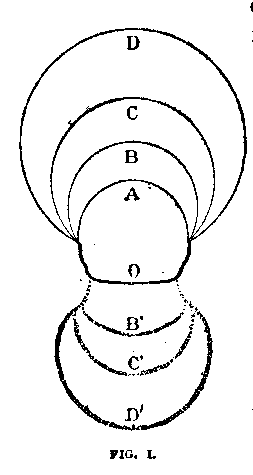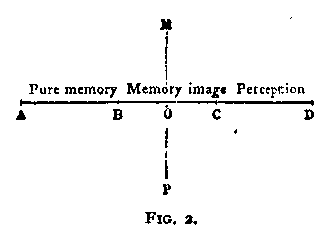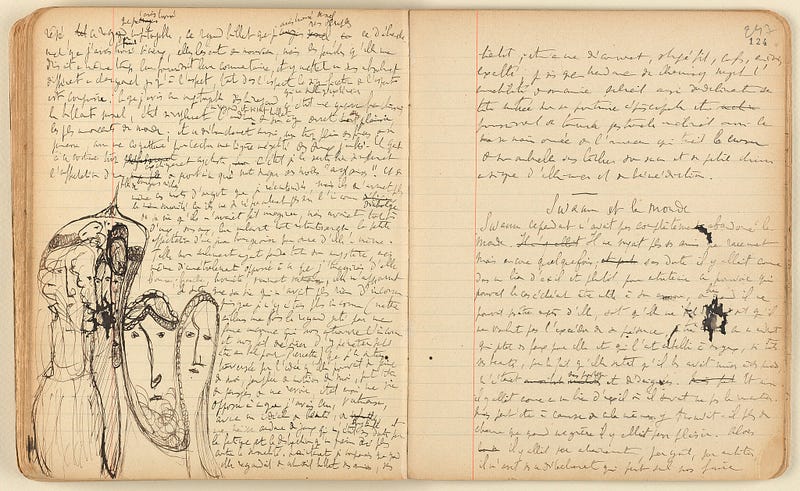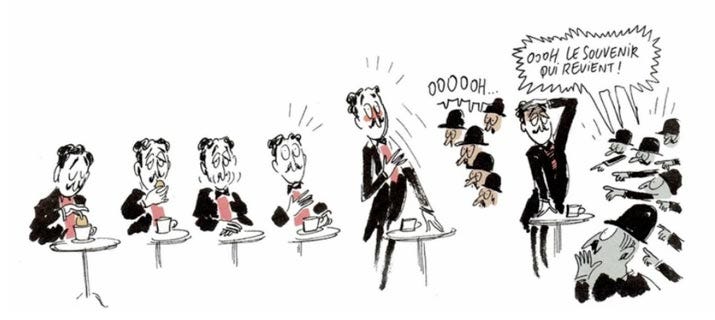Understanding Proust's Memory: A Deep Dive into His Masterpiece
Written on
Chapter 1: The Opening of ‘Combray’
The initial segment of Marcel Proust’s In Search of Lost Time, titled ‘Combray’, commences and concludes with the narrator confined to his bed, wrestling with insomnia. As Proust later articulates, an external observer would perceive nothing significant in this scene. However, within the pages bridging the start of ‘Combray 1’ and the finish of ‘Combray 2’, we gain insight into what Richard Bales describes as Marcel’s “inner goings-on”; encompassing his thoughts, memories, and aspirations. This narrative journey allows us to traverse vast temporal and spatial distances without ever departing from the confines of the narrator's bedroom.
This contrast between external appearances and internal experiences is intentional and recurs throughout the novel, particularly in the famous madeleine episode. It informs the structural essence of the narrative, which outwardly appears linear (the narrator lying in bed) while being experienced in a non-linear fashion (through the memories of Combray). This intricate storytelling mimics the human mind's workings, as it is experienced subjectively. Proust, as noted by Lehrer, emerges as one of the first artists to embrace Henri Bergson's philosophy, presenting perception as a ‘circuit’ rather than a straightforward sequence. Bergson emphasizes that disturbances from the external world inevitably lead back to the original object of contemplation.

Section 1.1: The Interplay of Memory and Experience
One significant implication of this circular narrative structure is that "each memory is inextricably linked to the moment of its recollection" (Lehrer). The narrator’s insomnia is not mere chance; it parallels his recollections of nights spent in Combray, during which he lay awake. The constraints of his current situation inhibit broader reflections: "everything regarding Combray that did not involve the theatre and the drama of bedtime had ceased to exist for me." As Jonah Lehrer asserts in Proust Was a Neuroscientist, Proust meticulously devotes fifty-eight pages to the narrator’s psychological state to illustrate how his present condition distorts his perceptions of the past.

Section 1.2: Proust's Writing Process
Due to both preference and chronic illness, Proust often wrote while reclining. His biographer, Diana Fuss, notes that he composed "from a semi-recumbent position, straddling the realms of sleep and wakefulness, using his knees as a makeshift desk." However, Proust recognizes limitations in aligning his work with Bergson's ideas. In a 1913 conversation with Elie-Joseph Bois, he distinguishes his approach from Bergson’s philosophy, particularly regarding voluntary and involuntary memory.
Voluntary memory involves a conscious effort to recall, as Samuel Beckett describes, presenting the past in monochrome. In contrast, involuntary memory is spontaneous and unpredictable; it cannot be controlled. For instance, when Marcel tastes the madeleine at the conclusion of ‘Combray 1’, a flood of memories surfaces, causing the present to dissolve and altering his sense of identity: “It had made the ups and downs of life seem trivial, its calamities benign, and its fleeting nature illusory, filling me with an essence that transcended me.” Unlike voluntary memory, the current state does not warp his recollection; rather, it is only when he dismisses the overwhelming sensations from the madeleine that the memory resurfaces: “timidity urged me to set it aside, to sip my tea while fixating on today’s worries and tomorrow’s desires, which seemed far easier to ponder.”
The Timeless Wisdom of Marcel Proust: In Search Of Lost Time | Book Summary - YouTube
This video delves into the profound insights of Proust, examining how his reflections on memory resonate with contemporary understanding.
The Genius of Marcel Proust | In Search of Lost Time - YouTube
Here, the video unpacks the complexities of Proust’s genius, exploring the intricate relationships between memory, time, and identity in his work.
Chapter 2: The Structure of Proust's Narrative
The introduction of involuntary memory presents a challenge to the Bergsonian model, yet it ultimately complements it. If one were to adapt Bergson’s circuit analogy to include involuntary memory, it would more closely resemble a figure-eight. As Malcolm Bowie notes in Proust Among the Stars, this structure is emblematic of Proust’s style: "The reader reaches a desired outcome only after navigating through a series of unexpected detours." Bales refers to these detours as the “idiosyncratic unfolding of impressions,” which becomes evident even at the sentence level. Proustian sentences often open and conclude conventionally, but their “capacious middle” (Shattuck) can be precarious, filled with a "halting quality" and subordinate clauses that challenge our memory (Kristeva).

Proust was acutely aware of how easily he could lose readers within this 'lost and found' framework. From the outset of ‘Combray’, he reassures us: “The little road the traveler follows will be etched in his memory by the thrill of new places, unfamiliar activities, recent dialogues, and farewells beneath strange lamps, lingering through the night’s silence.” This passage foreshadows the entire novel's structure, which Proust views, despite its digressions, as a cohesive and intentional construction. David Ellison, in A Reader’s Guide to Proust’s In Search of Lost Time, warns against fragmentation: “Proust designs his novel as a collection of discrete narrative segments that can often stand independently, tempting readers to isolate these passages and perceive them as equally significant yet thematically distinct.”
In truth, Proust’s challenge lies in acknowledging both the micro and macro perspectives. At the conclusion of ‘Combray 2’, he reflects: “These memories now coalesced into a singular entity, though distinctions remained apparent… if not fractures, then at least that veining, that variegation of color, reminiscent of certain stones and marbles, revealing variations in origin, age, and formation.” The objective is not to prioritize the whole over the individual elements or vice versa; rather, it is essential to appreciate how one arises from the other, just as Combray emerges from the warmth of a cup of tea.

Ultimately, ‘Combray’ merges Proust’s dual preoccupations: structure and significance. The overarching framework is constructed from “time mechanisms observable both in miniature within sentences and on a grand scale throughout the novel” (Bowie). This fractal approach imbues both the individual and the collective with meaning, fostering a mutual appreciation. Without this fractal element and its assurance of an “imminent return,” Proust risks leading his readers astray within the “idiosyncratic unfolding of impressions.” Thus, the structure serves to guide us, even when it leads us on unexpected paths.